Can Taiwan’s paranormal legends become a pop culture trend? Or will classic tales such as Aunt Tiger (虎姑婆) give way to similar Western stories such as Little Red Riding Hood?
Author Ho Ching-yao (何敬堯) ponders this question in the introduction to his 2017 book Yaoguai Taiwan (妖怪台灣), a compendium of over 200 traditional and modern supernatural beings, creatures and events.
Judging from the meticulously curated exhibition, “Yao-Chi City: Taiwanese Paranormal Literature and Contemporary Art” (妖氣都市: 鬼怪文學與當代藝術特展), which includes several illustrations from Ho’s book by Chang Ki-ya (張季亞), the answer is yes.
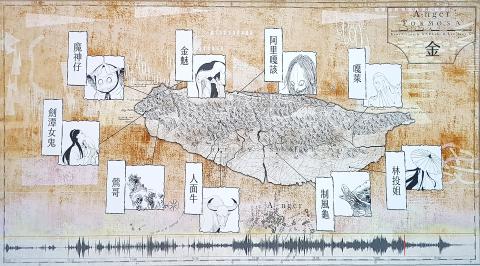
Photo: Noah Buchan, Taipei Times
Opening on Saturday last week at the Taiwan Contemporary Culture Lab (C-Lab), the multifaceted show focuses on the modern interpretations and applications of these legends and creatures, from sculptures, soundscapes and illustrations to motion comics, digital pop-up books and virtual reality (VR). The exhibition runs through Sept. 15 and will feature talks, performances and movie screenings over the next two months.
“We hope to help restore the paranormal to its former position of importance in Taiwanese culture,” write the curators.
Suppressed by the Japanese and Chinese Nationalist Party (KMT) rulers for decades and further suffering from the onslaught of Western and Japanese pop culture, Taiwanese paranormal legends seem to be in vogue again. This is most evident from The Tag-Along (紅衣小女孩), a well-received movie franchise that featured Moxina (魔神仔), a mountain demon known to kidnap people. The series’ third film, released last year, explored the urban legend of the human-faced fish, which dates back to the early 1990s.
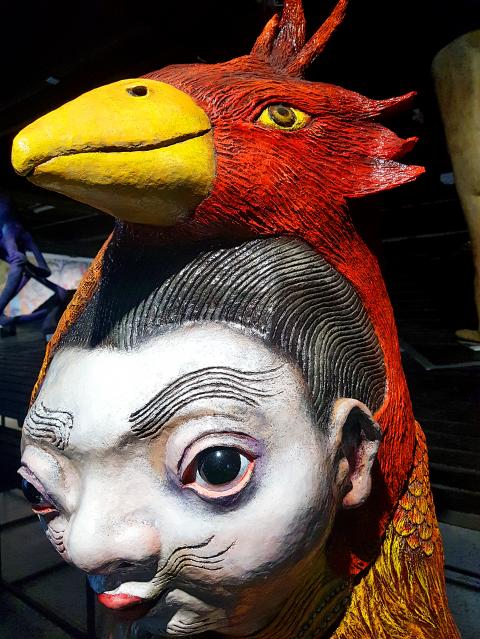
Photo: Noah Buchan, Taipei Times
Yao-Chi City comes hot on the heels of the National Museum of Taiwan Literature’s Enchanted Taiwan — Ghouls and Goblins (魔幻鯤島—妖鬼奇譚) exhibition, which ended in February and focused on the nation’s literary ghouls and demons and their modern-day representations. This time, the museum takes the theme further by collaborating with C-Lab to put together a cutting-edge art show that will surely attract a wider range of visitors.
CUTTING EDGE
As expected from the National Museum of Taiwan Literature, the exhibition is fully bilingual with impeccable English translations of the Chinese original. Context is important in something as culturally-specific as folk legends, and overall the descriptions explain the traditional inspiration and modern interpretations well. Some of the smaller text is hard to read due to the dim lighting, but otherwise it’s a well-thought out and executed journey that is easily navigable.
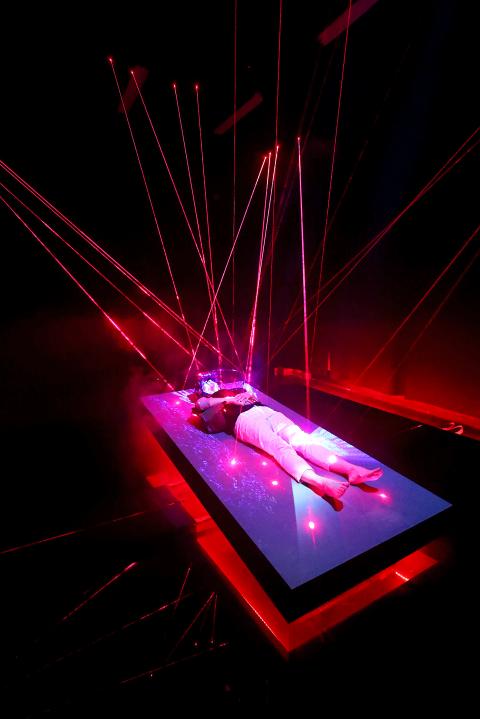
Photo: CNA
While literature remains the basis of the exhibition, that aspect is downplayed as the visuals and audio take center stage. Upon entering, the viewer is greeted by two eerie sculptures. A harrowing soundtrack inspired by Aboriginal shamans and tree spirits, and utilizing mostly natural sounds by Lee Ling-zi (李凌子), sets the tone. Small tear-off pads containing excerpts (in Chinese) from four featured novelists can be found throughout the exhibition, and there are also signs with author introductions as well as book samples — but that’s not what makes this exhibition so fascinating.
It’s the myriad ways that these creators incorporate the legends in their work that speaks to Ho’s original question about whether Taiwanese folklore can become a vital part of popular culture. Only about 30 percent of the pieces were commissioned, while the rest are drawn from existing projects. Yao-Chi City is an exemplary demonstration in how to keep traditions from fading — not by clinging to the past but by presenting them in a form that’s immediately relatable and of interest, especially to young people.
The different styles in which the artists work show that there’s not one way to represent tradition. Hou Chun-ming (侯俊明), for example, presents a series of large-scale woodblock prints that resemble ancient Chinese descriptions of deities, but are updated to confront contemporary sexual taboos. On the other end of the spectrum is Akru’s (real name Shen Ying-chieh, 沈穎傑) detailed manga-style depictions of stories by Japanese-era novelist Huang Feng-tzu (黃鳳姿).
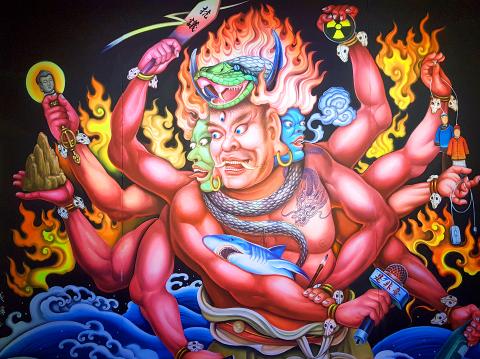
Photo: Noah Buchan, Taipei Times
Unfortunately, due to staffing issues, one of the two VR experiences were available — and there was a line because only two people can view the piece at a time. But Your Spiritual Temple Sucks by Serendipity Films (綺影映畫) was worth the wait. Combining 8-bit gaming graphics, real footage and panoramic VR 3D technology, it’s a humorous take on the guanluoyin (觀落陰, visiting the netherworld) ritual, where the protagonist tries to change his fate.
There’s not much to complain about this exhibition as it’s evident that Taiwan has come a long way in this area, even in the past few years. The Creative Expo in April was another stellar display of local culture that stressed interactivity and multisensory experiences. The static posters and drab displays with horrific English have no place in today’s curating world, and Yao-Chi City definitely sets a new bar for excellence.
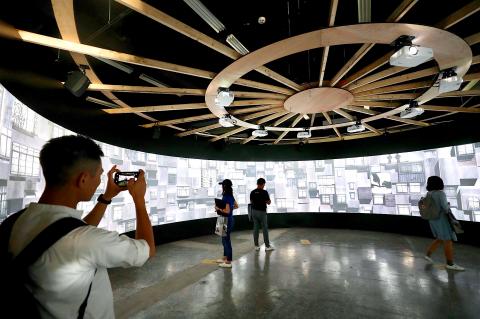
Photo: CNA
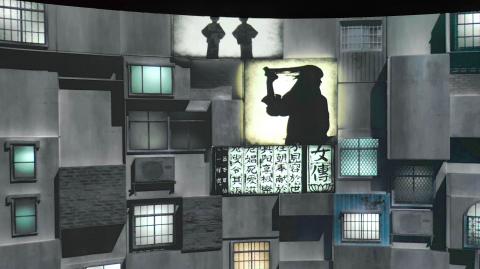
Photo: Han Cheung, Taipei Times
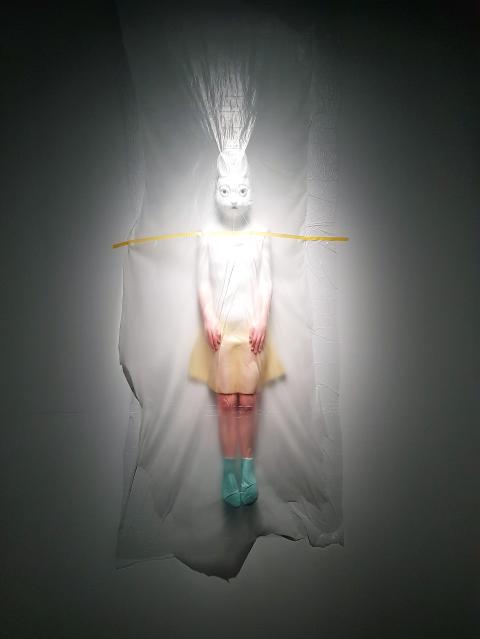
Photo: Noah Buchan, Taipei Times

In the March 9 edition of the Taipei Times a piece by Ninon Godefroy ran with the headine “The quiet, gentle rhythm of Taiwan.” It started with the line “Taiwan is a small, humble place. There is no Eiffel Tower, no pyramids — no singular attraction that draws the world’s attention.” I laughed out loud at that. This was out of no disrespect for the author or the piece, which made some interesting analogies and good points about how both Din Tai Fung’s and Taiwan Semiconductor Manufacturing Co’s (TSMC, 台積電) meticulous attention to detail and quality are not quite up to
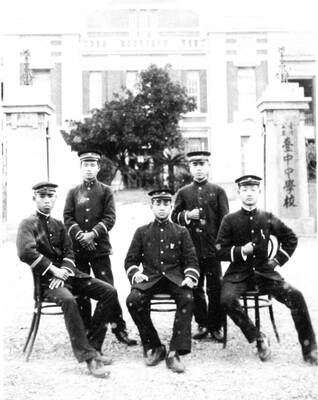
April 28 to May 4 During the Japanese colonial era, a city’s “first” high school typically served Japanese students, while Taiwanese attended the “second” high school. Only in Taichung was this reversed. That’s because when Taichung First High School opened its doors on May 1, 1915 to serve Taiwanese students who were previously barred from secondary education, it was the only high school in town. Former principal Hideo Azukisawa threatened to quit when the government in 1922 attempted to transfer the “first” designation to a new local high school for Japanese students, leading to this unusual situation. Prior to the Taichung First

Chinese Nationalist Party (KMT) Chairman Eric Chu (朱立倫) hatched a bold plan to charge forward and seize the initiative when he held a protest in front of the Taipei City Prosecutors’ Office. Though risky, because illegal, its success would help tackle at least six problems facing both himself and the KMT. What he did not see coming was Taipei Mayor Chiang Wan-an (將萬安) tripping him up out of the gate. In spite of Chu being the most consequential and successful KMT chairman since the early 2010s — arguably saving the party from financial ruin and restoring its electoral viability —

The Ministry of Education last month proposed a nationwide ban on mobile devices in schools, aiming to curb concerns over student phone addiction. Under the revised regulation, which will take effect in August, teachers and schools will be required to collect mobile devices — including phones, laptops and wearables devices — for safekeeping during school hours, unless they are being used for educational purposes. For Chang Fong-ching (張鳳琴), the ban will have a positive impact. “It’s a good move,” says the professor in the department of